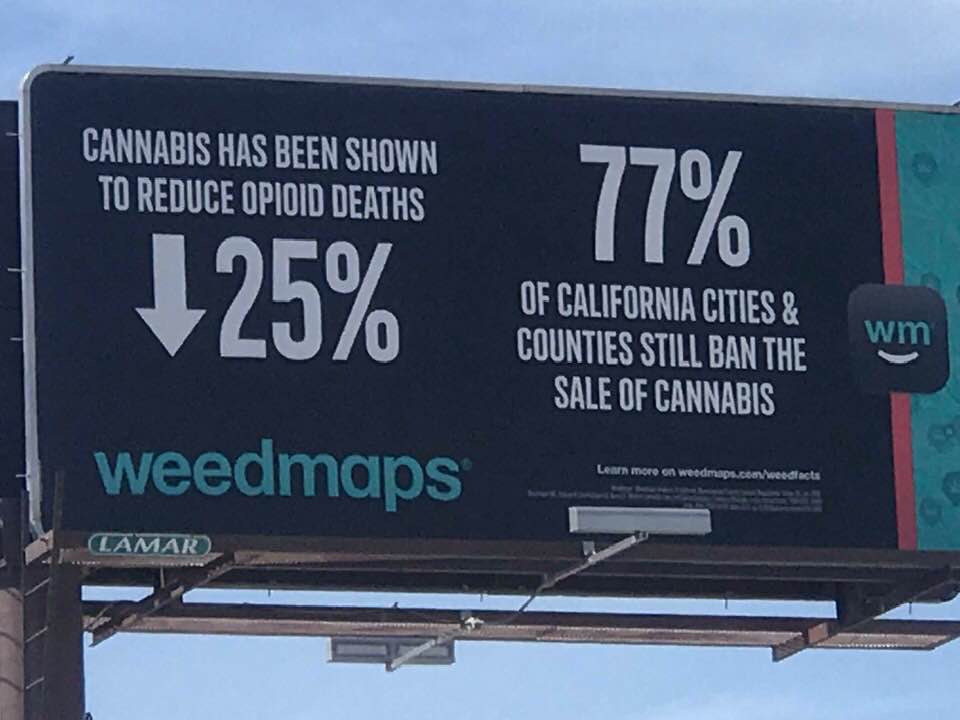
Last week in California, Assembly Bill 1356 failed to muster enough support to proceed, and with it now on the shelf until at least January of 2020 so too is the best option that we had to begin to straighten out the crooked compliant Cali cannabis industry.
California currently has around 650 retail storefront licenses. There are a few hundred “non-storefront”/ delivery licenses but many if not most of those are tied to an existing storefront license/brand. Additionally, there are a few hundred “microbusiness” licenses currently active. According to the Bureau of Cannabis Control, “A microbusiness license allows a licensee to engage in the cultivation of cannabis on an area less than 10,000 square feet and to act as a licensed distributor, Level 1 manufacturer (Type 6), and retailer, as specified in an application. In order to hold a microbusiness license, a licensee must engage in at least three (3) of the four (4) listed commercial cannabis activities.”
Overall, storefront dispensaries, non-storefront deliveries, and all microbusinesses make up less than 10% of the total number of licenses issued by the state so far. So 90% of the licensees are tasked with creating products but only 10% of them are allowed to sell those products – you can see the problem already, right?
Of the 540 cities and counties in the state of California, 388 (or 71.8%) of them saw majority support for Proposition 64 in 2016, the successful ballot initiative that went on to lay the regulatory framework for the mess we’re in now.
However, now less than a third of those cities and counties are allowing for legal, licensed, storefront dispensaries to open on their turf. Some have banned commercial cannabis activity completely, but in 53 cities up and down the state, licenses have been granted for cultivation, distribution, manufacturing, or lab testing, but not for retail sales.
AB 1356 would have mandated that every municipality in the state that had 50%+ support for Proposition 64 back in 2016 be forced to issue at least one commercial retail cannabis license for every 15,000 residents *or* one for every six restaurants or bars with a liquor license – whichever number is lower in each circumstance.
Honestly, 1 for every 15,000 is too conservative. The rule of thumb is that most communities can utilize 1 dispensary for every 10,000 residents, but easy math tells us that with roughly 40 million California residents and let’s be generous and say 1,000 active shops, delivery services, and micros, we currently have a ratio of 1 store for every 40,000 residents and as we are seeing, that bottleneck in the supply chain is not sustainable. Those figures do not even begin to account for the number of tourists that California attracts each year, and the additional strain that puts on the new legal market.
For comparison, Colorado has a total population of just under 5.7 million people and they actually do have just over 1,000 medical and recreational cannabis dispensaries. Again, easy math. . . roughly 1 legal dispensary for every 5,700 residents. With the supply chain flowing properly, Colorado has not experienced nearly the growing pains that Cali has so far.
Assembly Bill 1356 would have boosted the number of licensed retail cannabis dispensaries by nearly 300%, taking the total number of stores up to somewhere around 2,200. But, it turns out even the modest ask made by AB 1356 was too much, too soon here in California and its authors were unable to get enough support to challenge the 2/3rds vote that would be needed to overwrite this core plank of Prop 64 which is now cemented into the state constitution.

Even with an entirely different set of licensing headaches over on the cultivation side, Cali is still kicking out an estimated 13 million pounds of permitted pot each year. . . and that number will continue to grow. So far it has filled the spattering of retail shelf space across the state with little accountability. With the mandatory implementation of METRC track and trace software now in place, we predict that the true supply of compliant flower is going to flood the limited dispensary market and here’s why that might not be a good thing.
Everything is about balance, right?
Right now, dispensaries in general have almost all of the power. They know that they are a rare breed and that shelf space is limited statewide. As a result, brands are being forced to compete in some less-than-conventional ways just to get a chance to be in front of consumers. If supply goes up as we predict (regardless of quality, unfortunately) shops will continue to hold power in their ability to set their wholesale buying prices lower and lower. In most traditional industries, if as a retailer you can double your money on any given product, that’s a fair win. But as prices drop on the wholesale side of legal weed, retail prices remain at back alley prohibition-fueled levels leading to even wider margins in the store’s favor.
State officials predicted a lot of things about legal weed that have not come to fruition, one of which was their vision of 6,000+ retail storefronts bustling with healthy competition and funneling precious tax revenues back to the suits in Sacramento. Instead, a realistic effort to dramatically raise the number of our licensed dispensaries to just 1/3rd of that phantom goal has gone up in smoke until sometime next year.
Meanwhile, California Governor Gavin Newsom has pledged to spend hundreds of millions of tax dollars this year cracking down on the black market of cannabis – the boogeyman being blamed for the legal market’s many woes. Just this week we saw hundreds of law enforcement officers descend on the hyper-rural community of Anza in Riverside County, destroying 100 greenhouses and arresting dozens of people suspected of skirting the broken system.
This is legal weed?
Military vehicles and mass raids?
If a mere fraction of those funds were to be diverted into whatever emergency action the Gov has to take to free the flow of the supply chain and get more retail licenses approved and active, we’d see more competition, price stabilization, and a massive uptick in retail sales/tax revenues in the legal market. People want to buy their cannabis like they buy their tomatoes but nobody wants to pay way too much or drive an hour to get some. If you’re going to make it legal, make it easy. If the legal market had a realistic barrier of entry and an honest promise of allowing the Average Joe to make a living from within it, the black market for weed would eventually shrink to the black market for beer. How many people do you know scoring rare and unregulated lagers in a random parking lot?
Nobody on our crew voted for Prop 64 but unless it is somehow repealed and replaced it is the flawed law of the land. Our windows of opportunity to effect real change are so narrow and when we miss them, months go by before they reopen. It is imperative that we keep the pressure on our elected officials at all levels of government so that we can take advantage of our next opportunity to correct this law. We have the overwhelming will of the people on our side – will you add your voice to the cause?
CLICK HERE TO IDENTIFY YOUR LOCAL STATE REP then email them monthly to remind them that their constituents voted for safe access to legal cannabis and that you expect them to step up and make it a reality every opportunity they get.
Keep updated on all the latest news and updates in the Cannabis industry here at Beard Bros Pharms by signing for our Friday Sesh Newsletter here. Always Dank and Never Spam!

















